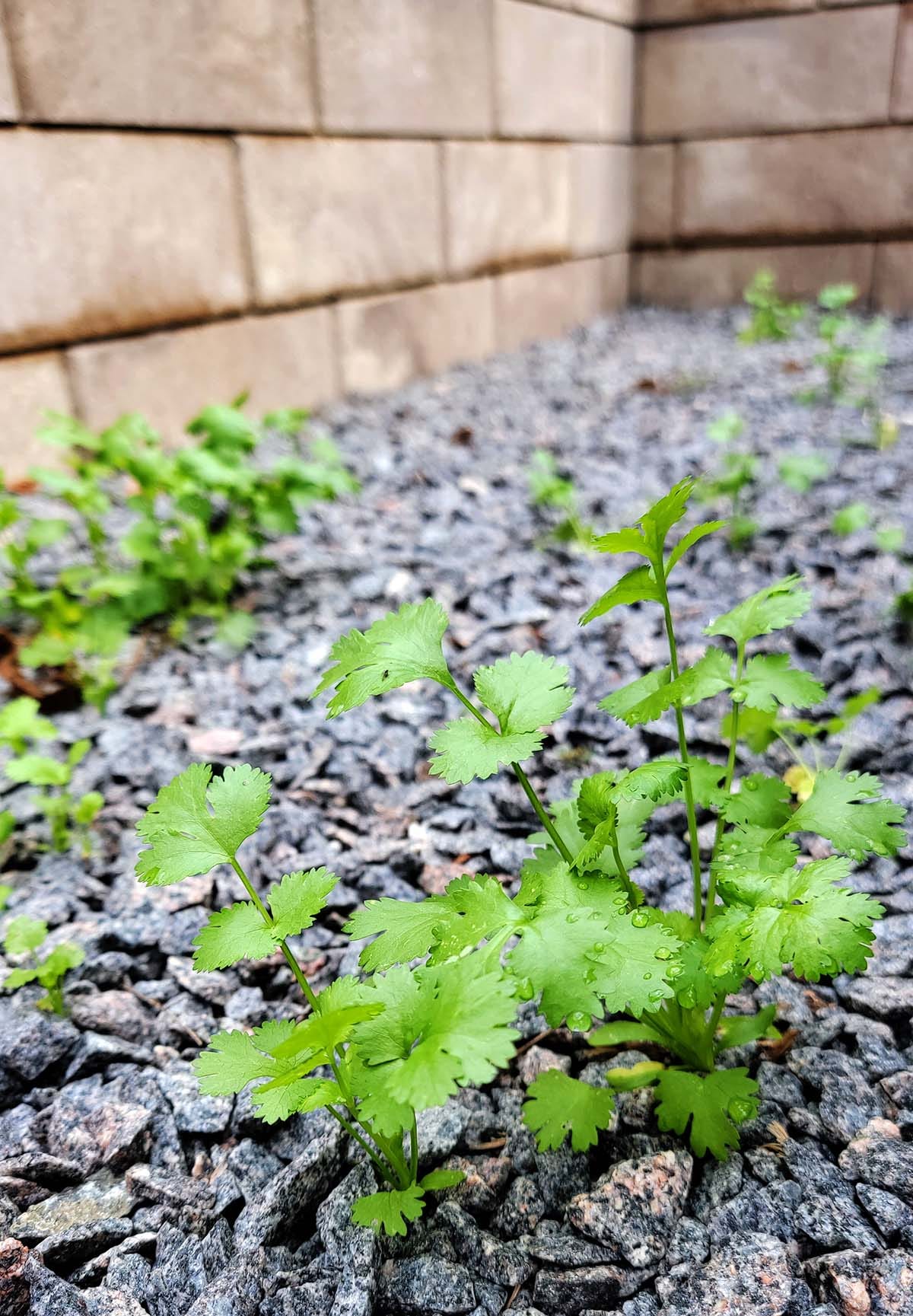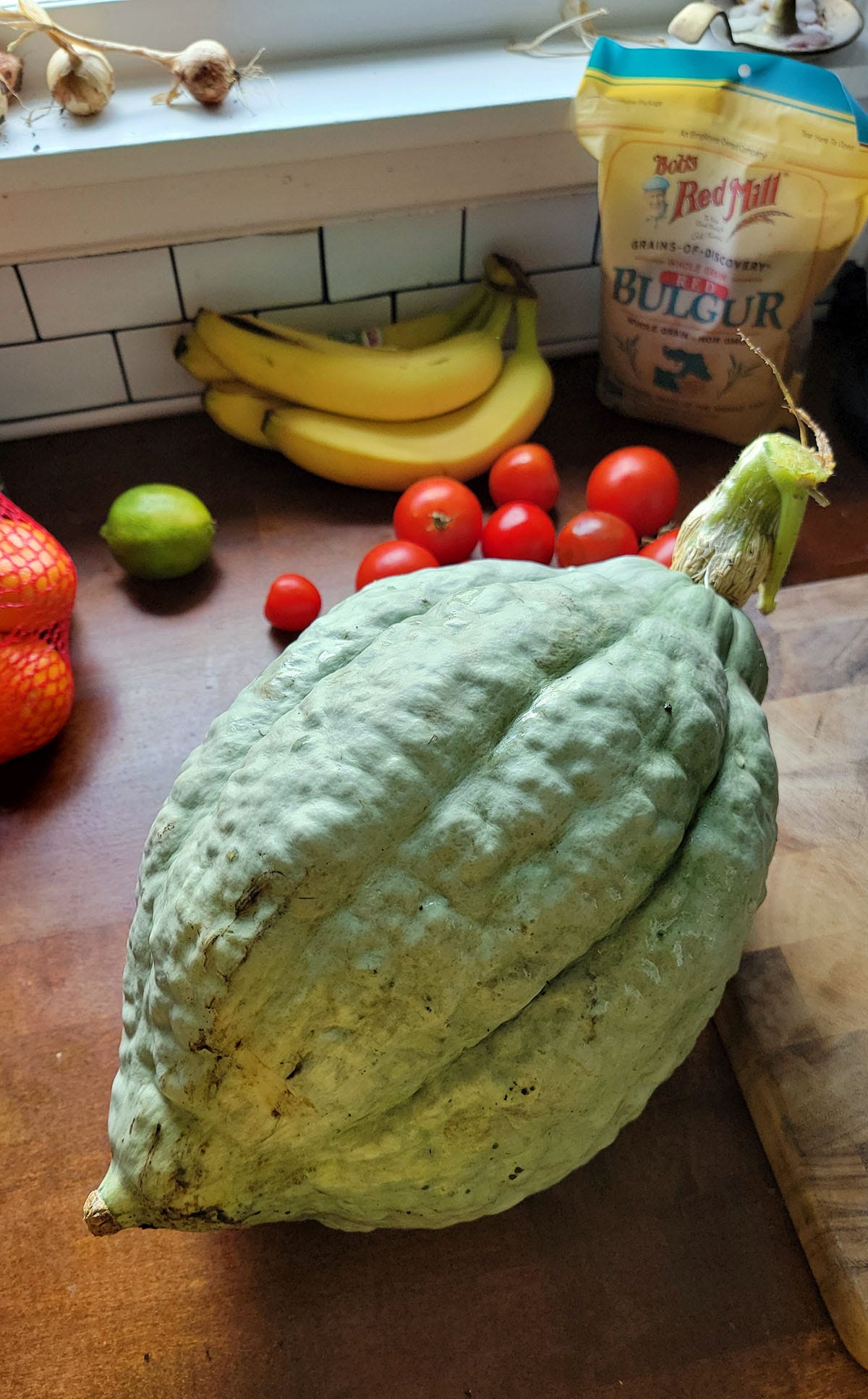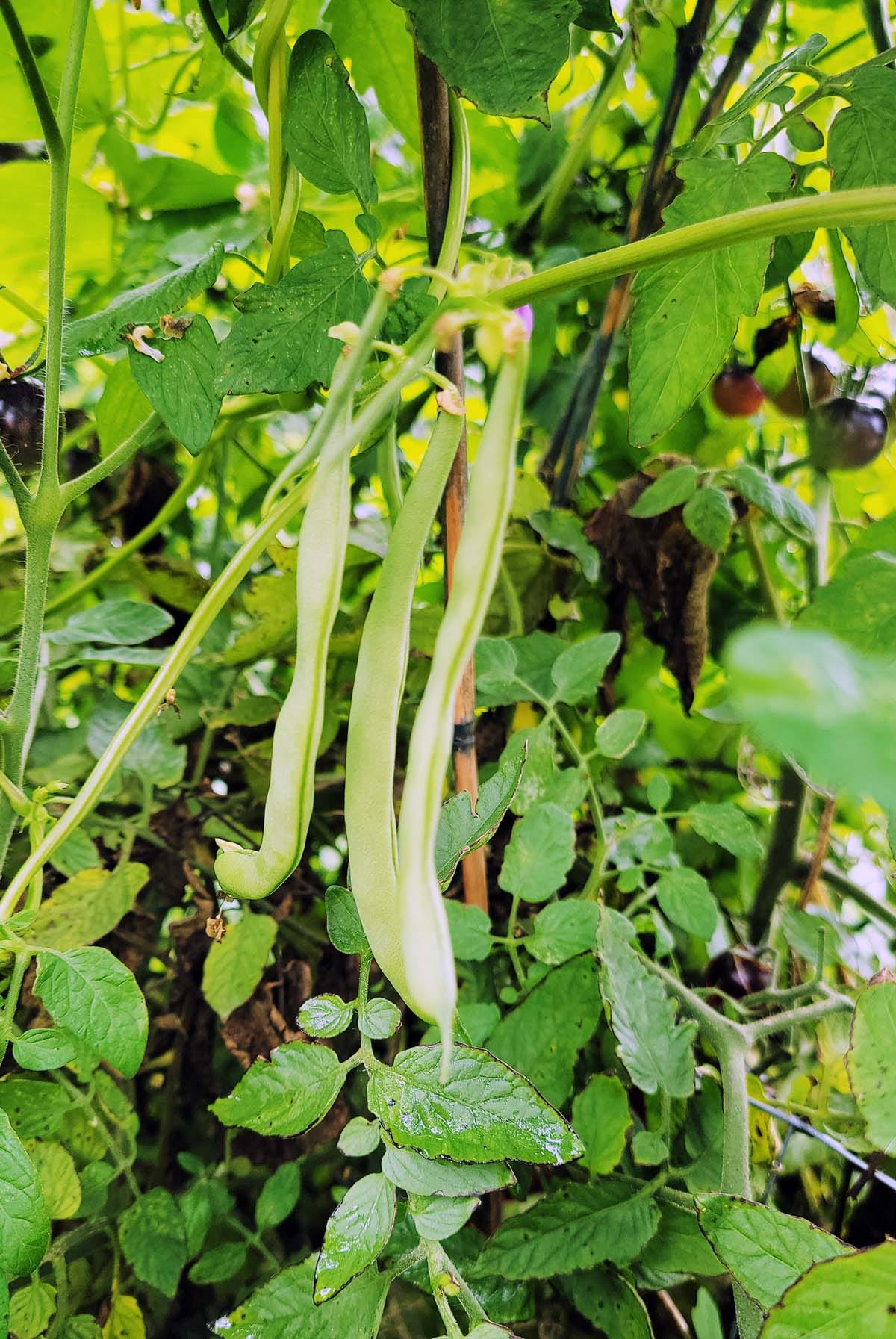Support the Volunteers
I harvested a hubbard squash today. And some haricot verts green beans. Picked some cilantro for salsa, too. I planted none of these.
Eight anise hyssop plants thrive in my front yard. I’ve planted only one. Epazote, that most indestructible of herbs, is busily teaching my chives and lovage Spanish. Volunteers all. And I love them.
Grids, rows, straight lines. These are the hallmarks of most gardeners, at least here in the United States. And while I will grid out my garden beds, there are always gaps, aberrations. Blame the volunteer plants.
Volunteers are indicators of the vitality of your soil, but they are also reminders that life has its own designs. They arrive unplanned, a surprise, yet often at just the right moment. A bean sprouting randomly tells me it’s time to plant beans with intention. A squash, left for dead and tossed aside, reappears months later, stronger and healthier than I could have imagined.
Each morning, on every patch of open dirt, I survey my little garden for seedlings. I've grown to know them well, even by their cotyledons, or baby leaves. Color, shape, sometimes just how they shine in the morning light, most become young friends.
Most. Not all volunteer plants are friends. Even the slightest hint of creeping Charlie, which is the Devil in plant form, gets rooted out on the spot — even if it means killing a good volunteer.
Other unwanted volunteer plants are either those that decide to grow too close to a favored plant, like a bean sprouting an inch from a pepper seedling, or those that sprout with, well, exuberance. Earlier this year, I thinned out about 100 lambsquarter seedlings. I didn't kill them all, however. I left some of the strongest to feed me and my friends.
Thinning is another key part of managing your volunteers. I basically play knockout with them. Who is winning? Let the strongest survive. I have scads of a Tarahumara orache growing all over the garden. I've left it because it is both pretty and delicious. But when they crowd themselves, I thin them and eat the seedlings. The survivors thank me in their own quiet way.
Occasionally some of your volunteers will be especially coveted, like the hubbard and the green beans. The hubbard’s ancestor was a squash I’d bought at the farmer’s market in October 2023 that I saved seeds from and grew out in 2024. I am, er, known to sow seed vigorously. I just can’t see throwing seed away when I can at the very least feed the birds. Sometimes this gets me in trouble. I sowed a whole bunch of squash seeds all around my rhubarb, but those needed to get thinned. The rhubarb has pride of place in my yard. It’s been here longer than the volunteers, and will be here long after. The rest must bend around it.
As for the green beans? They’re from my neighbor, who grows them a few feet away. One apparently liked being right next to my tomato bed, and flourished there.
Another category of volunteer plants are those that can live comfortably with their neighbors. Purslane and lambsquarters are two main ones in my garden. Purslane is basically a groundcover and will act like a living mulch for other plants... until I pick and eat it. Lambsquarters can get big in lush soil, but they're more tall than wide, and beans seem to like them enough to use as scaffolding.
Let's talk about volunteer tomatoes. Tomatoes, beans, and squash all suffer the same problem: These plants are, well, promiscuous and will cross with themselves randomly and wildly. Peppers will do this to some extent, too. But tomatoes and various curcubits are the worst. If creeping Charlie is evil in plant form, these plants are Forrest Gump's box of chocolates: You never know what you gonna get.
Solve this dilemma by growing only one variety of said plant. Find your beloved squash or tomato and stick with it. Beans and peppers are easier, since the various species won't cross with each other. Tepary beans won't cross with "regular" beans, nor will they with runner, lima or fava beans.
Or you can let The Fates decide and go for it. One year, I did that with a tomato seedling. I had no idea what it was. All I knew was that it was strong. Very strong. Stronger than any seedling I'd nursed and doted over. So I let it live. This tomato grew nondescript round, red tomatoes of nondescript size. They were OK. But man, there were so many of them! I managed to jar a gallon of sauce from that one plant. A happy accident. These happen often.
Volunteers. Some thinned, some woven into the fabric of the garden, some simply accepted with delight. They remind me that control is never the whole story. You can map, plan, and grid, but sometimes the best things arrive unexpectedly.
I’ve learned to let the strongest volunteers grow, even if they don’t quite match the plan. They bring abundance where I hadn’t asked for it. A gallon of sauce from a tomato whose name I never knew. A patch of lambsquarters lush enough to feed me and my friends. Happy accidents, again and again.
This is why I love all this. It shows me that my garden has agency of its own, a path that, even if I were gone, it would follow. But when I accept the surprises and fold them into my life, both garden and gardener grow stronger.
Sometimes the unexpected doesn’t just renew you — it reminds you why you garden in the first place.





My best squash and tomatoes come from the compost bin. Melons as well, and like the squash, I never know what I'm getting until it fruits. When they start coming up, I switch to dumping the scraps in the adjacent bin until the next season. Outside of the compost bins and the raised beds, there aren't many volunteers beyond the herbs that enjoy poor soil, so I like imagining your culinary jungle.
At then end of the season I toss my plants and herbs out in the pasture. Occasionally I have volunteer squash or pumpkin. However, I also have a huge patch of mint. The cows do not like to eat it so it grows larger every year. When the cows walk thru it the air is perfumed with mint.